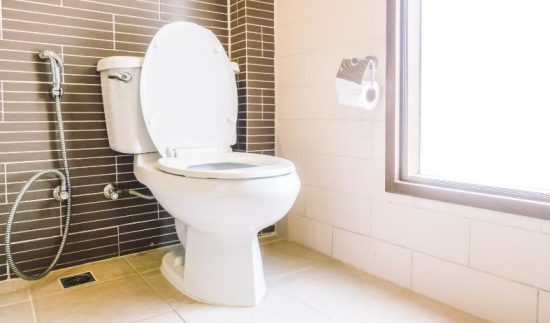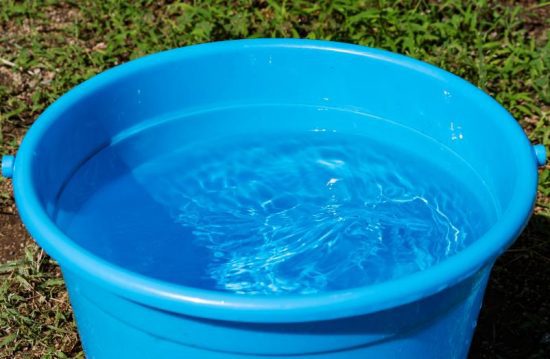Flushing a toilet without access to running water might seem daunting, but it can be simple and stress-free with the right approach. Whether due to a water outage, plumbing repairs, or other disruptions, knowing how to flush toilet when water is off is crucial for maintaining hygiene and comfort in your home. In this article, we’ll explore several effective methods to manage this issue, ensuring you’re always prepared.
How to Flush Toilet When Water is Off?
Understanding the Mechanics of a Toilet

Understanding how a toilet functions is critical to address the issue efficiently. Water is filled into a tank on a typical toilet. This water is released during a flush, which moves waste down the plumbing and into the sewer system. Ordinarily, the flushing mechanism operates only when water is in the tank. There are, nevertheless, several methods for manually starting this procedure. The primary components of a toilet’s flush mechanism are water pressure and gravity.
A flapper valve within the tank seals the bottom entrance, keeping the water within until the flush lever is pulled. Pressing the lever causes the flapper to rise, forcing water into the basin forcefully. This action creates a siphon effect in the toilet’s trapway, which pulls the contents from the bowl and pushes them into the sewage system. Moreover, the design of the tank and bowl ensures that the water is distributed efficiently to cleanse the bowl as it flushes, making the process both practical and hygienic.
Using a Bucket of Water

One of the simplest ways to imitate flushing is with a bucket of water. Using a bucket and roughly one gallon of water, you may replicate the natural flushing process with this manual method. This method’s simplicity makes it accessible and straightforward to use, especially during unplanned water outages.
Pour the water into the toilet bowl swiftly and from a height to complete this manual flush. The water’s force assists in forcing the bowl’s contents into the plumbing, clearing the bowl. This method addresses the urgent requirement while using the least amount of water possible, making it an environmentally friendly choice when there is a water scarcity.
Collecting Water: Alternative Sources
If your primary water supply isn’t working, use alternate water sources for flushing. Rainwater collection in barrels is a great way to create a reserve perfect for non-drinking uses like toilet flushing. By utilizing natural rainfall, this approach guarantees a backup supply and promotes environmental protection.
Another valuable source of water is water that is not used in the home due to everyday activities. You may reuse the water left over after boiling veggies, making pasta, or rinsing fruit. This reduces total water waste in your home while simultaneously meeting your flushing demands and encouraging a more sustainable use of resources.
Chemical Toilet Solutions
Chemical solutions, frequently found in portable toilets, may be an option for extended periods without water. Without flushing, these chemicals aid in the breakdown of waste and controlling odors. Common choices include enzyme-based solutions, which are more environmentally friendly and break down trash organically, and formaldehyde-based chemicals, which are more successful at quickly breaking down garbage.
These chemical additives are only sometimes the best option, but they can come in handy during lengthy repairs or crises. They offer a workable substitute for preserving sanitation, particularly when water availability is either wholly absent or severely limited. By trying these alternatives, you may maintain the hygienic and operational state of your toilet without using a conventional water flush.
Installing Water-Saving Toilet Fixtures
Installing devices like dual-flush mechanisms or low-flow toilets can significantly reduce the water needed for each flush, even if this may involve initial plumbing work. Because of their economical design, these fixtures use less water while still managing waste with equivalent effectiveness. With dual-flush systems, you can use more water for solid waste and less for liquid waste, resulting in significant water savings over time. Additionally, several environmental programs that provide incentives or rebates can help install such devices.
Conversely, low-flow toilets use cutting-edge technology to reduce water use while increasing flush pressure and efficacy. This lowers your monthly water bill and aids in water conservation. Upgrading to these water-saving fixtures is a proactive step towards lessening your home’s environmental impact, especially with the increasing emphasis on sustainability.
Preparing for Future Water Interruptions
Preparing for eventual disruptions involves taking preventive measures to guarantee that your everyday activities continue despite unexpected issues. A water reserve is essential; you should always keep a few liters of water up for emergencies. This reserve can offer piece of mind and be necessary for handling home demands during unplanned water outages.
Regular plumbing maintenance is another crucial step. Maintaining the health of your plumbing will help you avoid many problems with the water supply and toilet operation. It’s also essential to teach everyone in the household how to manage these circumstances. Water interruptions can be made less stressful and help maintain hygiene when everyone in the house knows how to use other flushing techniques and recognizes the value of conserving water.
Conclusion
Learning how to flush your toilet manually when there is no running water is essential for any homeowner. By preparing in advance and understanding the basic principles of how your toilet operates, you can ensure that your household remains functional and hygienic, even during unexpected water outages. The techniques outlined above provide practical, efficient solutions that can help easily manage these situations. With a little bit of preparation and the proper knowledge, maintaining sanitation without a direct water supply becomes manageable, ensuring comfort and hygiene are upheld under any circumstances.
FAQs
How much water do I need to flush a toilet manually?
Typically, one gallon of water poured quickly into the bowl is enough to flush a toilet manually.
Can I use greywater from my household for flushing?
Yes, greywater from activities like washing dishes or bathing can be reused to flush toilets, which is an excellent way to conserve water.
Are chemical toilet solutions safe for septic systems?
Some chemicals are safe for septic systems while others can disrupt the bacterial balance. Always notice the product label to ensure compatibility with septic systems.
How often should I perform maintenance on my toilet?
Regular maintenance in every 6 to 12 months is good to keep the flushing mechanism and other parts in good working condition.
What should I do if my toilet doesn’t flush appropriately with a bucket of water?
Ensure you are pouring the water with enough force to create a flush. If issues persist, check for potential clogs or plumbing issues that may need professional attention.

